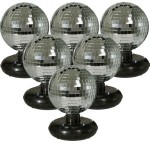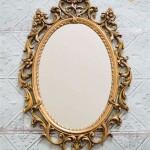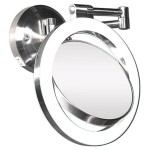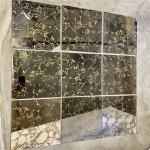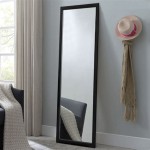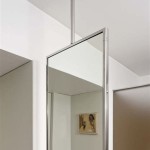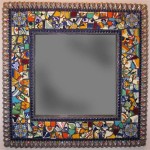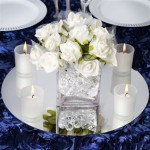What Mirror for Bathroom?
Choosing the right bathroom mirror involves more than just picking a shape and size. It's a crucial design element that impacts both the functionality and aesthetics of the space. This article explores the various factors to consider when selecting a bathroom mirror, from the practical aspects of size and lighting to the stylistic influences of frame design and shape.
Size and Placement: The size of the mirror should be proportional to the vanity or wall space it occupies. Generally, the mirror should be slightly narrower than the vanity. For a smaller bathroom, a larger mirror can create the illusion of more space. Placement height is also crucial for usability, ensuring everyone in the household can comfortably use it.
Mirror Shapes: Traditional rectangular and square mirrors remain popular choices, offering a classic and versatile look. Round and oval mirrors are increasingly trendy, adding a touch of softness and elegance. Unique shapes like geometric or arched mirrors can serve as statement pieces, adding personality to the bathroom.
Frame Styles: The frame of a mirror significantly impacts its style. A frameless mirror offers a clean, modern aesthetic, while a wooden frame can bring warmth and a traditional feel. Metal frames, such as brushed nickel or chrome, provide a contemporary look. Ornate frames with intricate details can add a touch of luxury and glamour.
Mirror Features: Modern bathroom mirrors often incorporate various features to enhance functionality. Integrated lighting, such as LED strips around the perimeter, provides task lighting for grooming. Defoggers prevent the mirror from steaming up during showers. Magnifying mirrors offer a closer view for detailed tasks like applying makeup or shaving.
Lighting Considerations: Proper lighting is essential for a functional bathroom. The mirror itself should be well-lit, either with integrated lighting or with wall-mounted fixtures placed on either side. Consider the color temperature of the lighting, opting for a neutral or cool white for accurate color rendering during makeup application.
Budget and Quality: Bathroom mirrors are available at a wide range of price points. While budget is a factor, consider the quality of the materials and construction. A well-made mirror with a durable frame and a high-quality reflective surface will last longer and provide better value in the long run.
Style and Design: The style of the mirror should complement the overall bathroom design. For a modern bathroom, a frameless or metal-framed mirror is a good choice. A traditional bathroom might benefit from a wooden or ornate framed mirror. Consider the existing fixtures, finishes, and color palette when selecting a mirror to create a cohesive look.
Installation Methods: Most bathroom mirrors are designed for wall-mounting, either with screws or adhesive. Some larger mirrors might require additional support. Ensure the wall can support the weight of the mirror and use appropriate mounting hardware for a secure installation.
Maintenance and Cleaning: Regular cleaning is essential to keep the bathroom mirror looking its best. Use a glass cleaner and a soft cloth to wipe away streaks and smudges. Avoid abrasive cleaners that can scratch the surface. For mirrors with integrated lighting or other features, consult the manufacturer's instructions for specific cleaning recommendations.
Mirror Materials: The most common material for bathroom mirrors is glass, which provides a clear and distortion-free reflection. However, other materials like acrylic are also used, particularly in settings where safety is a concern, as acrylic is shatter-resistant. Consider the pros and cons of each material based on the specific needs of the bathroom.
Ventilation and Humidity: Bathrooms are inherently humid environments. Ensure adequate ventilation to prevent moisture buildup, which can damage the mirror frame and potentially the reflective surface over time. Proper ventilation also helps prevent the growth of mold and mildew.
Accessibility Considerations: For bathrooms designed for accessibility, consider the height and placement of the mirror. The mirror should be positioned at a height that is accessible to wheelchair users. Tilting mirrors can also be beneficial, allowing for adjustment to different angles.
Matching with Existing Decor: When choosing a bathroom mirror, consider how it will integrate with the existing décor. Look at the colors, textures, and styles present in the bathroom. The mirror should complement these elements, creating a cohesive and visually appealing space. Consider the hardware finishes of other fixtures like faucets and lighting to ensure a harmonious look.
Space Optimization: In smaller bathrooms, the mirror can play a crucial role in maximizing the sense of space. A large mirror can reflect light and create the illusion of a larger room. Consider using a mirrored medicine cabinet for additional storage while maintaining the reflective surface area.

Antique Mirrors In A Bathroom Adding Charm Character

7 Bathroom Mirror Ideas Lowe S

4 Pieces Every Small Bathroom Needs 2024 On Roomhints Com

Led Lighted Bathroom Mirrors Smart Tv Electric Mirror

35 Best Bathroom Mirrors Of 2024 Top Picks

Homlux 36 In W X H Round Frameless Led Light With 3 Color And Anti Fog Wall Mounted Bathroom Vanity Mirror 27d7004792 The Home Depot

4 Pieces Every Small Bathroom Needs 2024 On Roomhints Com
:strip_icc()/Design_CathieHongInteriorsPhoto_ChristyQPhotography-1f0a7254eb7a435aa80046b0bf60d33b.jpg?strip=all)
10 Feng Shui Rules For Mirrors According To Experts

Round Backlit Led Heated Bathroom Mirror 800mm Luna Better Bathrooms

Klajowp 36 In W X 24 H Small Rectangular Framed Wall Mounted Bathroom Vanity Mirror Black Rm01 6090 120 The Home Depot

